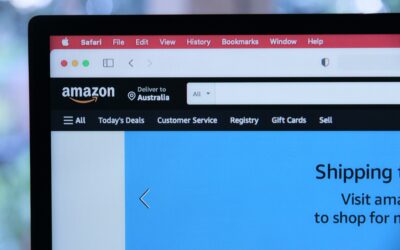What is it?
The How-To Video is fundamentally instructional. The goal is to help your target customers learn something new related to your business, and how they can use the new skill or knowledge together with your products and services to solve a problem. By way of example, a million people might be aware of an app or a software package, but show them a video featuring a new tip, a hack or time-saving shortcut the app can do, and suddenly there is interest to go with awareness. Your audience sees a solution in action — a solution that’s clear and easy for them to understand — and that can help them solve a problem.
This link gives you an example of one of our How-To Videos for a digital device company. The company needed an engaging and quick way to introduce functions on their new smartphone. The video conveys the essential information in 30 seconds.
Here’s a simple How-To Video from audio company Altec Lansing, showing how to use one of the company’s portable Bluetooth speaker models. Notice the entire video was filmed with a close-up of the product against a neutral background, with a run time of 2 minutes. Simple and effective.
In this much-flashier example, a professional fisherman shows how to set up the Shakespeare brand of rod and reel for a particular type of fishing. The video is subtle in the sense that it was produced by Shakespeare but relies on a popular celebrity in the angling community to explain the gear. It, too, runs for only 2 minutes but packs in a lot of information.
When/Where to use.
Two factors help guide your decision on when and where to use a How-To Video.
1. When people face a problem they’re trying to solve and don’t have the skills or knowledge they need, most often they will turn to Google to search for an answer.
2. Given the number of search results they will likely encounter, these same people most of the time will click on a link to a video that promises to help solve their problem. More than a third of online activity now involves watching videos. Learning and educational content drives more than a billion views per day on YouTube, according to the company, which is owned by Google. This is why you see YouTube videos first when you search for video content on Google.
Because the search on Google is more likely to be a generic query, rather than a specific search for your company or brand, it’s a good idea to upload the How-To Video on popular hosting sites including YouTube and Vimeo. YouTube far and away dominates this space, so if you don’t have a YouTube channel set up for your company, you should. Then you’ll be able to build a following of subscribers to your channel, optimize keywords associated with your videos to improve your search results on Google, check your traffic and measure viewing activity. You’ll also be able to track your click-through rate (CTR), which is the percentage of viewers who watch at least some portion of your video, then click a link for further action, typically to visit your website where they can continue to evaluate your offerings in greater detail and make a purchase.
You can also post How-To videos on your company website, either under a special tab devoted to How-To videos for your products, or you can create individual landing pages for each How-To Video associated with a specific product.
Why use it.
The How-To Video by definition helps people solve a problem or complete some beneficial task. The goal is to show how your product or service helps them accomplish this. As a result, you provide a valuable service that can convince an audience to buy from your company when they need to solve a particular problem.
There is also an intangible benefit of How-To Videos. It is psychologically satisfying to watch an individual solve a problem in real time when the viewer shares that same problem and needs an answer. Seeing the problem solved establishes the credibility of your company’s offering. People watch your video, learn how to do something, and come away with the knowledge that to get it done, they need your products and services. In short, How-To Videos can persuade potential customers to buy from you without being too aggressive. The video does the selling because it provides visible proof that your solution solves their problem. At the end of the video, however, their problem still exists so the only logical conclusion they can make after watching your video is to buy from you. Because you’ve just showed them how your company solves the problem.
How to use and Analyse/Measure
Use How-To Videos on platforms like YouTube to reach the broadest possible audience. You can always post the video to your company’s website, but remember that people will almost always conduct a Google search when looking for a solution to their problems — and Google owns YouTube. This means YouTube videos on the search topic are going to get first preference in the displayed search results for all videos on the topic.
There are seven key ways to measure the success of a How-To Video:
View Count
As the name suggests, this is a measurement of how many times your video is watched. It’s a good metric when you’re trying to reach the largest possible audience. Note that not all view counts are created equally. YouTube counts a view if the person plays the video for at least 30 seconds. On Facebook, 3 seconds counts as a view.
Play Rate
When a How-To Video is uploaded on your company website, the Play Rate helps you understand the relevance of the video relative to where it exists on your website. Moving a video to a different web page can sometimes drive a big improvement in play rates.
Engagement
This is a measurement of how long your viewers watch the video and whether they skip around. Typically, shorter videos will be more successful with audience engagement. Around 2 minutes is the sweet spot for a How-To Video. More complex topics can be broken down into video installments – Part 1, Part 2, etc.
Social Sharing
This occurs when people watch your content, then send the link to their friends and contacts. You get more views, which can lead to more social sharing. To improve the likelihood of sharing, there’s no harm in asking the audience to forward the link across their social network if they enjoyed your content.
Click-Through Rate (CTR)
This is the percentage of viewers who take the next step – clicking a link to your company website, for instance — after watching your video. This is a clear sign of strong interest, engagement and the greater likelihood it will lead to conversions.
Conversion Rate
This measures the percentage of people who become paying customers after watching your video. To track this data, you’ll need to set up your company website to work with Google Analytics so you can follow the path viewers take from your video to a sales page on your website. You can get started here with Google Analytics.
Audience Feedback
While comments posted below your video may not provide data you can use to measure conversions, the feedback is still a useful gauge of how well your video is received. The final key metric is feedback on your video, which we touched briefly on in social sharing. This isn’t a number but rather the qualitative data you can gain by tracking how viewers react to and comment on your video content. This can be a determining factor in how you adjust your messaging for future videos.
Features
Whether the How-To Video demonstrates a product or explains ways to use a service, there should be an actual person on-screen doing the talking. It’s easier for your audience to identify with a person they can see, rather than an off-screen narrator. Also, chances are the How-To will need someone on the screen showing the process unfold. Examples include a handyman demonstrating the power of a cordless drill or a chef showing the proper, most efficient technique of chopping vegetables with a particular brand of kitchen knife.
How-To Videos ideally run for about 2 minutes or less. Audience engagement tends to drop off rapidly the longer a video’s running time. For more complex How-To presentations, one solution is to break up the content into several video chapters, with the end of each chapter promoting the next.
Process to create
Focus on topics that highlight your company’s expertise. This establishes your brand as a credible and trustworthy resource. As people discover that you know what you’re talking about, you are seen as an authority in your industry. That’s a win-win for prospective customers and your company.
No need to devote any time to explaining why the topic of your video is important. If people are clicking on your video, they probably already believe the topic is important. Instead, go straight to the How-To and start demonstrating. Short and simple videos work best. If the topic cannot be simplified for risk of losing the substance, then the video can be edited into segments where each new part builds on the knowledge shared in the previous part.
Because your company manufactures the product or delivers the service to be explained in the How-To Video, chances are your best talent to appear in the video is already showing up for work every day. In other words, someone on your team can probably be enlisted to give the presentation. This is a common strategy in How-To videos for companies that make a product requiring some level of experience to get the most out of it.
Electronic devices are an example. Poke around YouTube and you’ll discover hundreds of thousands of How-To videos where employees at scores of different companies explain how to use wireless headphones, get the maximum benefit from an exercise bike, or maybe take a deep dive into the menu of a digital camera to discover valuable but lesser-known features. For instance, many companies sell digital cameras, but if you produce a How-To video showing how your camera brand can be used for photographing the constellations in the night sky, well, that’s interesting information and shows your product delivers added value. The video demonstrates how to use the camera for this type of photography with images of the results, which are stunning. Word gets around: your brand is capable of doing cool things that someone in the market for a new camera would probably enjoy but maybe had not thought of.
Coming up with an angle that shows your unique solution to the customer’s problem is a key part of the pre-production process.
Costs
Video production companies typically charge a predetermined amount based on each minute of finished video. The average cost of producing a minimal How-To video is about $1,000 per completed video, so a rough estimate is easily determined based on the anticipated running time. Motion graphics videos require more work and can be a significantly higher investment. Your video production company can provide a much more precise estimate after discussing your needs and the scope of the production you envision.
Generally, producing a video on location will cost more than a production under controlled conditions — either in a studio or at your own company headquarters. Locations may require permission and possibly a fee for using them, whereas the production facilities or research & development wing of your company might provide the perfect place to shoot a How-To Video with one of your products.
Production time
Four weeks is generally the minimum time frame to conceptualize, produce and complete a How-To Video. Pre-production is essential both to conceive the most effective presentation and to rehearse the presentation before actual videography begins.
Some How-To Videos need to be shot on location in an environment where a product is used. This is both a practical consideration as well as an audience expectation. A How-To Video demonstrating the replacement of spark plugs in a car’s engine would work best when shot in a garage. Similarly, explaining how to apply wax to a snowboard would require some shots of snowboarders barreling down a ski slope. Point being, location work may add to the production time, depending on the specifics of your products and services.
Benefits
People go online searching for How-To videos because they need help solving a problem. If you convincingly demonstrate that your company’s offering solves the problem, your audience will be appreciative. You will have helped them. They will also finish the video realizing that there are things they’ll need to buy to solve the problem, whether it’s fixing a hole in the wall, replacing broken tiles in the bathroom or changing an oil filter on a lawn mower. And that’s where your company seals the deal. You’ve just shown in a How-To Video that your construction and home-repair products fix the hole in the wall or the broken tiles, or that your brand of oil filter is the right choice to keep a lawn mower running all summer long.
Besides helping people, the key benefit of a successful How-To Video is whether it leads to a purchase.
A lesser-known benefit is the How-To Video that demonstrates preventive maintenance. An example would be a leather company that manufactures high-end briefcases. A How-To Video demonstrating proper care of fine leather products can help the company sell more bottles of its specially formulated leather conditioning lotion while increasing customer satisfaction with the company’s products. Why? Because proper care means a longer-lasting product, which translates into greater customer satisfaction.
Testimonials
“One of the best, most creative, most on-point creative groups you can find. On top of that they are on-time & on-budget! With great communication along the way they make the production process enjoyable and exciting!”
— Everett Bowes, WeTalkSocial
“Reliability and delivery. Best creative service around. Not a lot of companies out there that I trust like I do them.”
— Mike Crow, Orthofix
“Excellent to work with. Very creative and talented. Creative solutions. Delivered in a timely manner.”
— Brian Czock, SonLight Productions




